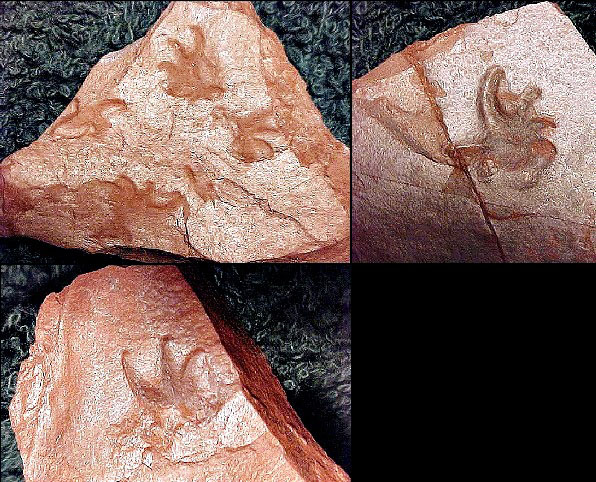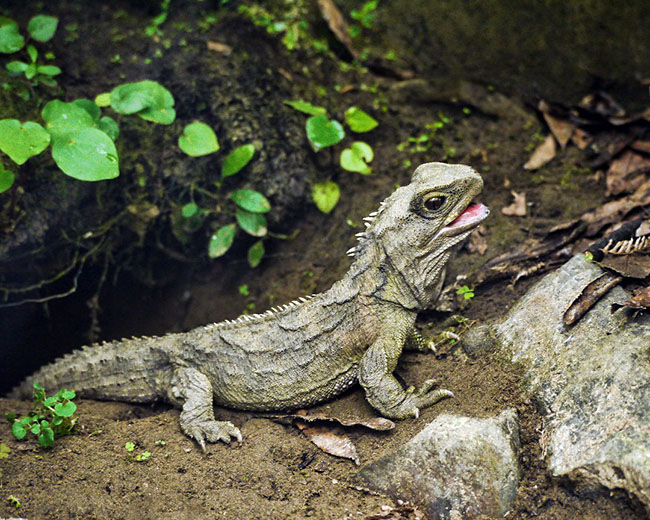
Rocky Ridge: Vestiges of an Ancient ‘Atlantis’
Richard D. L. Fulton


A great many people in North Frederick County are likely unaware as they go about their daily business or endeavors, that beneath their feet rests the vestiges of an ancient continent that, like the legendary Atlantis, was ultimately destroyed and lost to time.
This particular Atlantis existed during a period of time presently classified as being Late Triassic in age, which occurred some 220 million years ago when one sole continent existed… a continent, dubbed Pangea by geologists.
During this period of time, Pangea was in its “death throws” and was in the process of breaking up, due to the movement of the continental plates beneath it. That breakup led to the formation of a number of subcontinents, resulting in the end of Pangea around 200 million years ago.
But, in Rocky Ridge, one can still walk the ancient shoreline of one of Pangea’s great lakes that existed before its demise and even explore the lake bottom of this huge lake, dubbed Lake Lockatong.
At the height of this lake’s existence, Lake Lockatong sprawled from Rocky Ridge through Pennsylvania, New Jersey, and into New York State. Some geologists believe that this great lake covered an area equivalent to the presently existing Lake Tanganyika in Africa, at some 20,000 total miles in size.
Over millions of years, the sediments that had been deposited at the bottom of this lake in Rocky Ridge, as well as those of the associated mud flats, solidified into shale, and today provide a “window” into what times were like in Rocky Ridge when it was part of Pangea.
The most dominant vertebrate that abounded on the ancient mudflats of Rocky Ride was, without a doubt, a foot-long lizard called Rhynchosauroides, an animal that is believed to have been an ancient ancestor of the tuatara, which only exists today in New Zealand.
Hundreds of tracks of this lizard have been found in the Rocky Ridge mudflats, along with rare body impressions made when the lizards rested on the mud in shallow water.
Another rarer cat-sized reptile that wandered upon the mud flats is classified as dicynodonts, a group thought to have been extinct long before the Rocky Ridge mudflats were formed. It is generally believed that mammals evolved from this group of reptiles.
The Rocky Ridge Rhynchosauroides shared their environment with millepedes (also known today as thousand leggers) and prehistoric crickets and beetles, whose trackways lie scattered among the layers containing Rhynchosauroides tracks. One specimen was found revealing the body impression of a Rhynchosauroides surrounded by fossil cricket tracks!
The shale from the lake bottom found in Rocky Ridge revealed complete fossil fish, fish scales, coprolites (fossil excretion), fragmented bones, and the track of an as-yet unidentified aquatic reptile. There was plenty of food for these creatures in the lake, as their remains have been found with a multitude of freshwater clam shrimp, snails, and clams.
One particular Rocky Ridge site revealed that an immense conifer forest had existed at the time in proximity to the lake shore, and its branches, complete with leaves, were found in an eddy that had apparently formed off the lake and which was also loaded with freshwater clam shrimp.
Dinosaur tracks have yet to be found in the Late Triassic Rocky Ridge deposits, but dinosaur tracks were collected in the 1800s in a flagstone (rock intended to be used in walkways) that had been quarried only a few minutes away, outside of Emmitsburg.
A geologist—now retired—identified a layer of green shale in Rocky Ridge that would be the layer most likely to produce dinosaur tracks, but that layer has yet to be excavated.
Because every fossil recovered from the Late Triassic Rocky Ridge sites is new to Maryland and/or new to science, access to one of the richest sites is now presently restricted and is located on private property.
